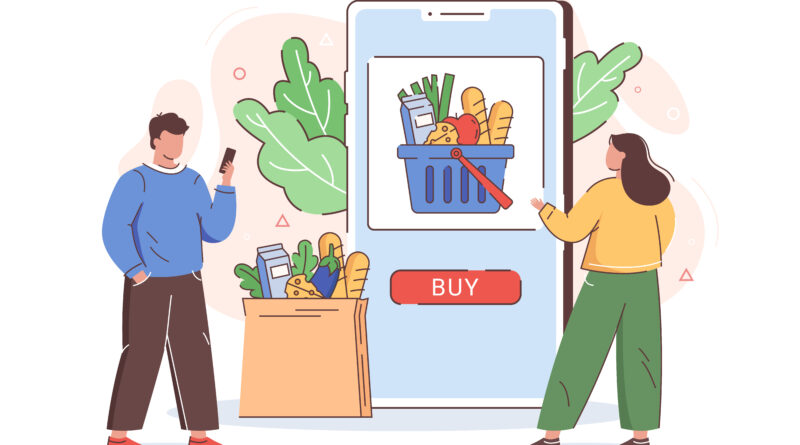Marketing Strategies for Promoting Your Grocery App in 2024
In the bustling digital landscape of 2024, where convenience is king and time is of the essence, grocery delivery apps have become indispensable tools for consumers seeking efficiency and ease in their everyday lives. However, with the proliferation of such apps, competition has intensified, making effective marketing strategies crucial for standing out in the market. This article delves into innovative marketing approaches tailored for promoting grocery delivery apps in 2024, focusing on leveraging emerging technologies, harnessing data-driven insights, and fostering meaningful customer engagement.
Embracing Augmented Reality (AR) and Virtual Reality (VR) Experiences
In 2024, the integration of AR and VR technologies into marketing efforts offers unparalleled opportunities to engage and captivate audiences. Grocery delivery apps can leverage AR to provide immersive shopping experiences, allowing users to visualize products within their own homes before making a purchase. By partnering with popular AR platforms or developing proprietary AR features, apps can differentiate themselves and enhance user satisfaction. Additionally, VR simulations can be utilized to showcase the convenience and efficiency of using the app, offering virtual tours of warehouses and highlighting the seamless delivery process. These immersive experiences not only drive user adoption but also leave a lasting impression, fostering brand loyalty.
Harnessing the Power of Artificial Intelligence (AI) and Machine Learning (ML)
In 2024, AI and ML algorithms have revolutionized marketing strategies by enabling hyper-targeted advertising and personalized recommendations. Grocery delivery apps can leverage AI to analyze user preferences, shopping behaviors, and demographic data to deliver tailored promotions and recommendations. By employing predictive analytics, apps can anticipate users’ needs and suggest relevant products, streamlining the shopping experience and increasing customer satisfaction. Furthermore, AI-powered chatbots can provide instant assistance and support, enhancing user engagement and fostering a sense of trust and reliability.
Implementing Omni-channel Marketing Campaigns
In the omnichannel era of 2024, seamless integration across multiple touchpoints is paramount for reaching and engaging diverse audiences. Grocery delivery apps can orchestrate omnichannel marketing campaigns that seamlessly span social media, email, SMS, and in-app notifications. By delivering consistent messaging and offers across various channels, apps can reinforce brand awareness and encourage user interaction. Moreover, leveraging location-based marketing techniques, such as geotargeted ads and push notifications, enables apps to reach users at the right time and place, driving conversions and enhancing user retention.
Cultivating User-generated Content (UGC) and Influencer Partnerships
In 2024, authentic user-generated content and influencer collaborations wield significant influence over consumer purchasing decisions. Grocery delivery apps can encourage users to share their shopping experiences, recipes, and meal ideas on social media platforms using designated hashtags or tagging the app’s official account. By showcasing real-life testimonials and product reviews, apps can build trust and credibility among potential users. Furthermore, strategic partnerships with influencers and micro-influencers in the food and lifestyle niches can amplify brand visibility and drive user engagement. Collaborating with influencers to create sponsored content, unboxing videos, or cooking tutorials not only expands reach but also resonates with target audiences on a personal level.
Prioritizing Sustainability and Corporate Social Responsibility (CSR) Initiatives
In 2024, conscious consumerism and environmental awareness are driving purchasing decisions more than ever before. Grocery delivery apps can differentiate themselves by prioritizing sustainability and integrating CSR initiatives into their marketing strategies. By highlighting eco-friendly packaging, locally sourced products, and carbon-neutral delivery options, apps can appeal to environmentally conscious consumers and position themselves as socially responsible brands. Moreover, partnering with charitable organizations or donating a percentage of proceeds to relevant causes resonates with socially conscious consumers, fostering goodwill and positive brand associations.
Gamification and Loyalty Programs
In the gamified landscape of 2024, integrating gamification elements into loyalty programs can incentivize user engagement and foster brand loyalty. Grocery delivery app development company can gamify the shopping experience by introducing challenges, rewards, and exclusive perks for loyal users. From earning points for each purchase to unlocking badges or levels based on shopping milestones, gamification mechanics motivate users to actively participate and return to the app regularly. Furthermore, incorporating social sharing features allows users to compete with friends or family members, amplifying engagement and virality. By making the shopping experience entertaining and rewarding, apps can enhance user retention and maximize customer lifetime value.
Conclusion
In the dynamic marketing landscape of 2024, grocery delivery apps must embrace innovative strategies to stay ahead of the competition and resonate with today’s tech-savvy and convenience-driven consumers. By leveraging emerging technologies such as AR, VR, AI, and ML, apps can deliver personalized experiences that enhance user satisfaction and drive engagement. Additionally, prioritizing omnichannel marketing, user-generated content, sustainability initiatives, and gamified loyalty programs enables apps to build meaningful connections with users and foster brand loyalty in an increasingly competitive market. By embracing these innovative marketing strategies, grocery delivery app solution can thrive and succeed in 2024 and beyond.

